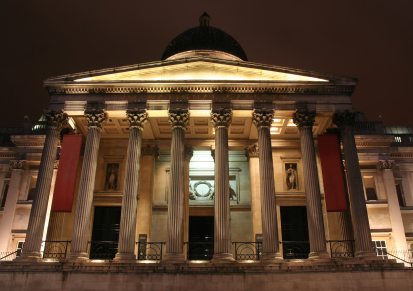Freedom of Information Blog: What do museums and galleries do about storage?

Most museums and galleries don’t have enough storage space to hold all the thousands of objects that they own. So what do they do with the rest? Storage.co.uk recently submitted a series of Freedom of Information Act requests in order to find out.
In all, ten major cultural collections were sent the three questions below about their storage arrangements. This is a summary of how they responded..
How much did you spend hiring storage space last year?
In all, eight of the ten organizations that were asked said they spent money hiring storage space last year, with only the British Museum and the Science Museum not doing so. Both said that they have enough room in the properties they own to provide storage for their collections.
A divide emerged in the other eight responses between the institutions which hire storage space to actually house objects from their collections, and the ones that use it to store other things, such as records and merchandise. The Tate Modern, for example, spent £142,148.43 hiring storage space for some of its exhibits, while the Wallace Collection and the Natural History Museum spent £72,265 between them on storage space for file archiving and retail stock.
Generally, more of the institutions which specified what they use their hired storage space for said they put files and stock in it, as such storage needs are relatively temporary and suit a short-term lease. By contrast, the permanent collections present a storage need that exists for much longer, possibly even hundreds of years; meaning it makes sense for the institutions to own all their exhibit storage.
The ten institutions between them spent just over £2.5 million on hiring storage space, with the British Library contributing the most at £1,354,996. They explained this is because they only have leasehold tenure on the three buildings they rent for off-site collection storage, and so have to pay rent. They said they are planning to end this arrangement when the current leases expire at the end of the year.
Roughly, what proportion of your collection is kept in storage?
The average among the 10 institutions is to have 64% of their collections in storage, although this rises to 72% if the Wallace Collection – which doesn’t keep anything in storage – is removed. The Wallace Collection is forbidden from ever loaning its paintings to other galleries, or keeping them in storage, because having everything on permanent display was a condition of their bequest.
The institutions actually found this a rather difficult question to answer, owing to the blurred distinctions between whether objects are in storage, accessible or on display. For example, the Victoria and Albert Museum has only 2% of its holdings – 61,324 objects – actually on display at once. However, you could argue that it doesn’t really keep anything in storage, because virtually all the remaining items (including over two million prints, photographs and drawings) are available to scholars on request.
Galleries tend to have less of their collections in storage than museums. The National Gallery keeps just 15% of its pictures in storage, as does the Tate Modern. Only a little behind them is the National Portrait Gallery, which has just 40% of its collection in storage. By contrast, all the museums keep the vast majority of what they own in storage – 90% at the Science Museum, 95% at the Imperial War Museum and 97% at the British Library.
The British Museum even provided figures for the number of objects it keeps in storage. Of the seven million items it owns, only about 70,000 can ever be displayed at once – roughly one percent. However, it could be debated to what extent any of these are really in storage, rather than on display, as virtually all of them are available to researchers by appointment.
How much storage space do you own?
Following on from the point above, the museums tend to own far more storage space than the galleries.
As it doesn’t need any, the Wallace Collection actually owns no warehouse storage space. The National Gallery has just 20,000 sq ft, and the National Portrait Gallery a mere 5,000 sq ft.
This is in sharp contrast to the amount of storage space the museums own. The Science Museum has the most with 707,000 sq ft, followed by the Natural History Museum with 447,000. The Science Museum has particularly interesting storage space. They’ve turned an entire disused aircraft hangar in Wiltshire into a giant garage for their collection of historic vehicles.
Also noteworthy for its amount of storage space is the British Library. As most of what they store is conventionally-sized books, they measure storage space in kilometres of linear shelving. In total, they own 790km of bookshelves, enough to stretch from London to Zurich.
The overall amount of storage space owned by the ten institutions combined is 1.76 million sq ft – more than twenty football pitches, or nearly 3 times the size of Britain’s largest entertainment venue, the O2 Arena.
Most of these institutions have storage space that is at least partly climate-controlled, as this helps to protect the fragile paintings and historic objects. This is one of the reasons that self storage units would be unsuitable, as they normally mirror the external temperature.
Leave a Reply
Subscribe to This Blog
Get new blog posts sent to you by subscribing to RSS updates or to email updates.






